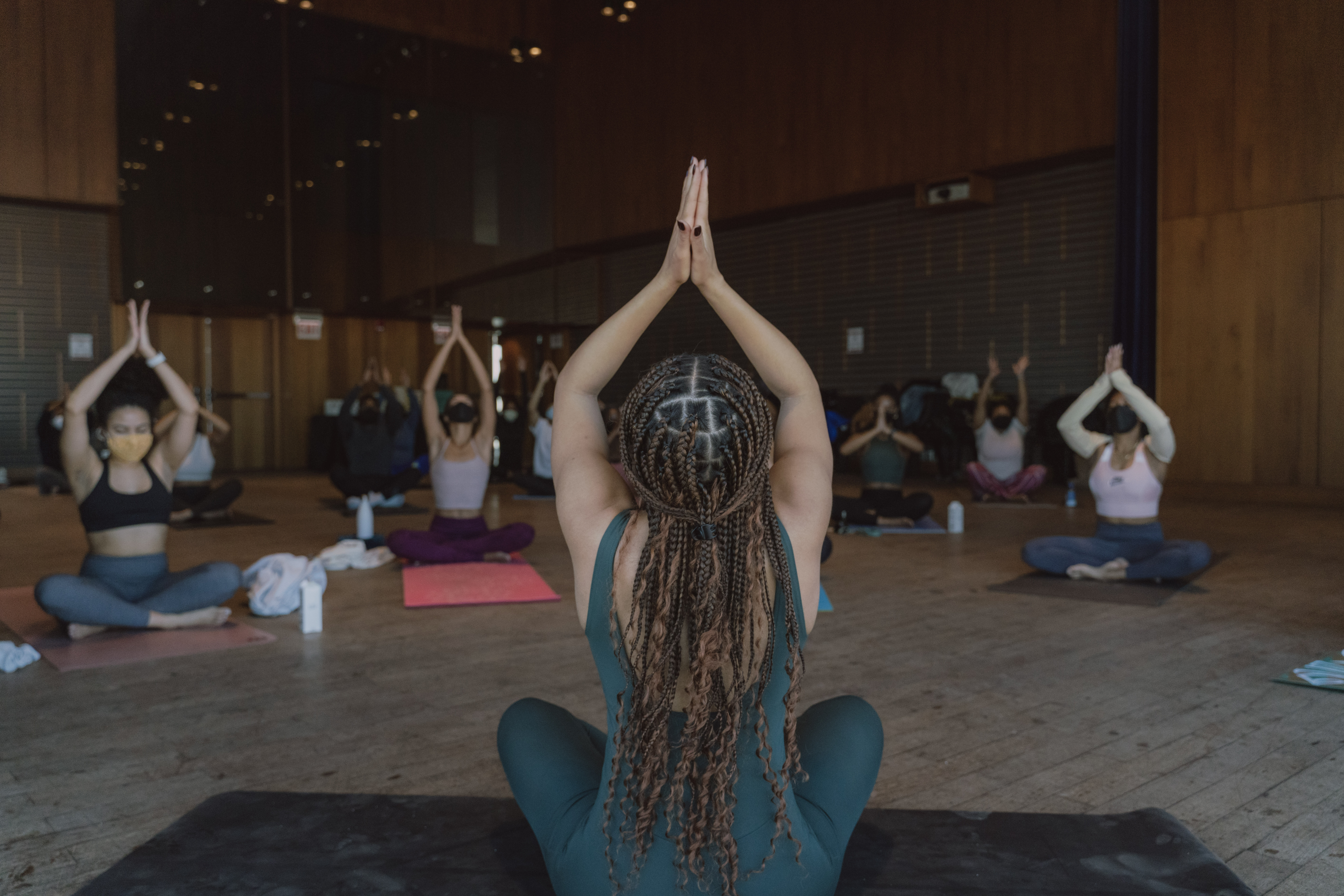Featured photo captured by Matt Battiest.
Words written by Paige Willis.
Chronic stress is toxic for your mind and body, especially when it’s left unchecked. It can contribute to mental and physical health problems, like high blood pressure, insomnia, burnout, and depression.
Needless to say, checking in with your body is essential. It’s an extension of soft living, aka a lifestyle that prioritizes ease over stress. Keep scrolling for some free/affordable ways to soothe your nervous system and create a sense of calm from the inside out.
Nervous system check-in
Let’s get into some background on the nervous system. Your nervous system is made up of two parts – the central nervous system (i.e. your brain and spinal cord) and the peripheral nervous system (i.e. nerves that branch off from your spinal cord). And we’re about to dig into two of the three divisions of your peripheral nervous system – the sympathetic and parasympathetic. Both impact how you experience stress. Here’s the difference between the two:
- Your sympathetic nervous system is a gas pedal. It takes your body from 0 to 100 when you’re confronted with a stressor, like an overwhelming workload, relationship woes, social media, financial struggles, or even the news cycle. This is what takes your body into survival mode.
- Your parasympathetic nervous system does the opposite. It’s the brake pedal that allows your body to “rest and digest,” lowering your heart rate, blood pressure, and stress levels. This is often what you experience when you’re doing yoga. You’re in a more relaxed state, where you might feel more calm, creative, and vulnerable.
While both serve a specific purpose for your body, if you feel constantly on-edge, irritable, or anxious, you might be spending more time on high alert (i.e. in the sympathetic zone). To establish more of a balance within your nervous system, tap into these yoga practices.
Breathing exercises
Try at least five minutes of deep breathing (i.e. slow, conscious breathing with awareness) to shift your body into a more relaxed state anytime, anywhere. Look into various breathing exercises, like diaphragmatic breathing, 4:6 breathing, box breathing, and ocean breathing to use your breath to manage stress and unlock a deeper sense of peace at a cellular level.
Yoga flows
Link breath and movement via a yoga flow to help reduce stress and gain mental clarity. And if you want your movement to be particularly soothing for your nervous system, make sure it incorporates forward folds (e.g. Child’s Pose, Ragdoll and Wide Legged Forward Fold). As you fold, these poses create space between the vertebrae in your spine, which sends a calming effect throughout your body.
Meditation
Develop your own meditation practice, so you can observe what’s going on in your world, without fixating on it. This is an extension of your yoga practice, and it’s an effective way to reduce stress and promote mental and emotional health. Try some guided meditations to start; my personal faves are the daily guided meditations and walking meditations on Open.
Soothing sounds
Make a playlist of soothing sounds or use the vibration of your own voice by humming or humming to invite calmness in. These sounds and vibrations can help stimulate your vagus nerve, aka the star player of the parasympathetic nervous system.
This list is not all-inclusive. There are so many other ways to invite ease into your body, like cold water exposure, nature walks, and seeking support from community. But let these practices serve as inspo for you. What are some ways you can find ease in your life? What works for you? In a world that caters more toward stress than rest, consistency is crucial.
If you want to learn more about your body’s connection to stress, I’ll include some resources I’ve been loving below. The more you learn, the better you can understand the true impact of self-care.
Cheers to the soft life.
Resources I’ve been loving:
- Watch
- The real reason why we are tired and what to do about it, Saundra Dalton-Smith
- Listen
- Healing Through Rest: Creating Balance for Your Nervous System, Balanced Black Girl
- Regulate Your Nervous System, Overcome Your Triggers & Heal Your Soul, The School of Greatness
- Read
- Black Women Are Embracing the Soft Life: “I Deserve Good Things All the Time”, Popsugar
- 5 Ways To Stimulate Your Vagus Nerve, Cleveland Clinic
- How the Parasympathetic Nervous System Can Lower Stress, Hospital for Special Surgery
- The Absolute Best Stress-Busting Yoga Moves Are Restorative Forward Folds, Well+Good
- Vagus Nerve Stimulation, Wim Hof Method
- Download
- Open (click the link for a free month trial of breathing, moving and meditating)
